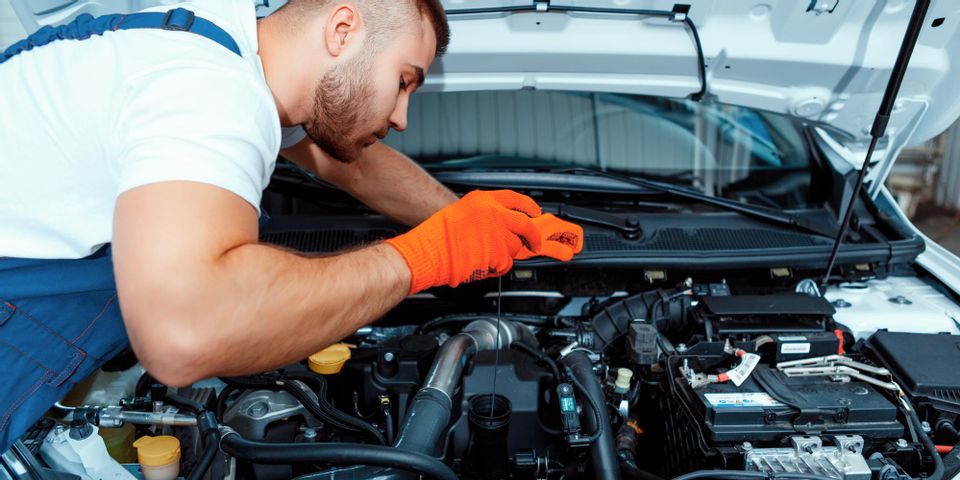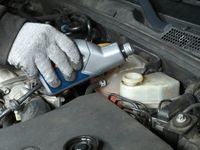5 Auto Fluids You Should Check Regularly

Among the simplest but most important auto maintenance tasks is checking fluid levels. That’s because your car depends on several fluids to operate at peak efficiency. When they’re running low, performance will slip. Even worse, problems won’t be far behind. Here’s what you need to look at under the hood on a regular basis.
What Fluids You Should Check in Your Vehicle
1. Engine Oil
Your engine needs oil to lubricate moving parts and take out some of the heat while running. Considered the most essential fluid, it requires more frequent monitoring than others. To correctly check levels, turn the engine off and wait for it to cool down. Remove and wipe the dipstick before putting in again for a clean read. If the reading falls below the safe level, top off as needed but refrain from overfilling.
2. Transmission Fluid
No matter the type of transmission, it requires fluid to run efficiently with proper lubrication. Like oil, use the dipstick to check levels; however, with transmission fluid, your engine has to be running. After the first dip, wipe the stick and reinsert it to gauge the level and condition. If the fluid is running low and looks or smells burnt, have it replaced in a trusted auto maintenance shop instead of topping up.
3. Brake Fluid
Most braking systems  rely on pressurized brake fluid for better stopping capability. When it’s at a dangerously low level, expect a couple of operational issues as you brake. Locate the master cylinder reservoir at the back of your engine, then see if the level is above the minimum marking. Refill as needed, but have an auto maintenance specialist check for possible leaks in the hydraulic system.
rely on pressurized brake fluid for better stopping capability. When it’s at a dangerously low level, expect a couple of operational issues as you brake. Locate the master cylinder reservoir at the back of your engine, then see if the level is above the minimum marking. Refill as needed, but have an auto maintenance specialist check for possible leaks in the hydraulic system.
4. Power Steering Fluid
Better vehicle control can sometimes be attributed to adequate levels of power steering fluid. Before checking if you have enough, switch the steering wheel from lock to unlock repeatedly while the engine is running. Turn it off, then proceed to use the eye test for fluid levels in the opaque reservoir. You can also use the dipstick or look inside the tank to see if there's enough.
5. Coolant
Also known as radiator fluid, coolant prevents the engine from overheating, especially during sweltering days. As with any fluids under the hood, it’s best to check its levels when the engine has cooled down after running for some time. The reservoir is normally translucent and marked on the side so you can conveniently see whether the fluid is near or below the minimum levels. If you need to top it off, make sure it’s a 50-50 mix of water and coolant.
This summer, regularly check the fluid levels in your vehicle for a worry-free drive. If you’re unsure about this auto maintenance task, bring your car to Foley Auto & RV Repair in Baldwin County, AL. Since 2007, their ASE®-certified mechanics have provided a range of services, including auto repairs, tuneups, and vehicle inspections. Call (251) 971-3770 to set an appointment or view their services online.
About the Business
(6 reviews)
Have a question? Ask the experts!
Send your question

